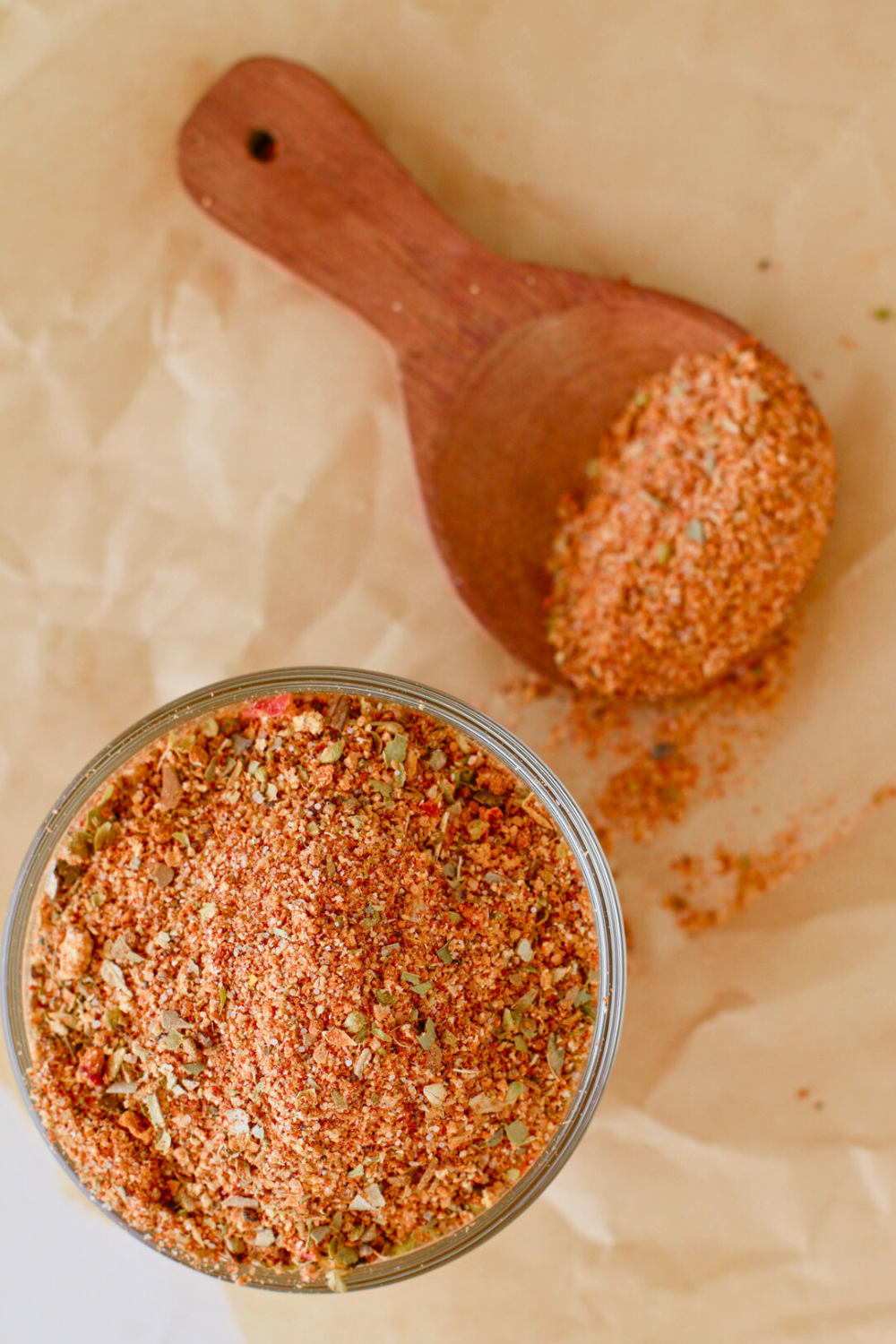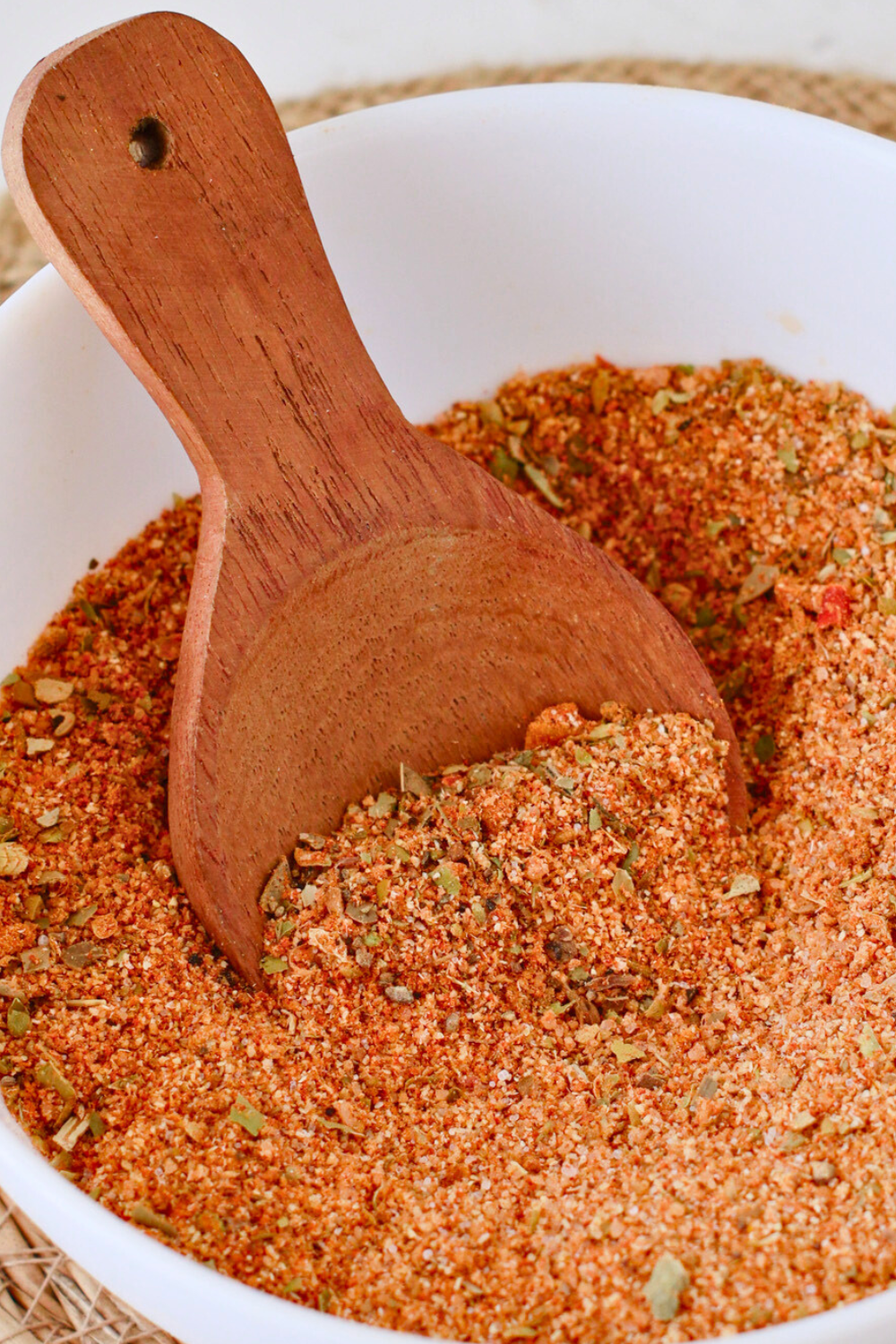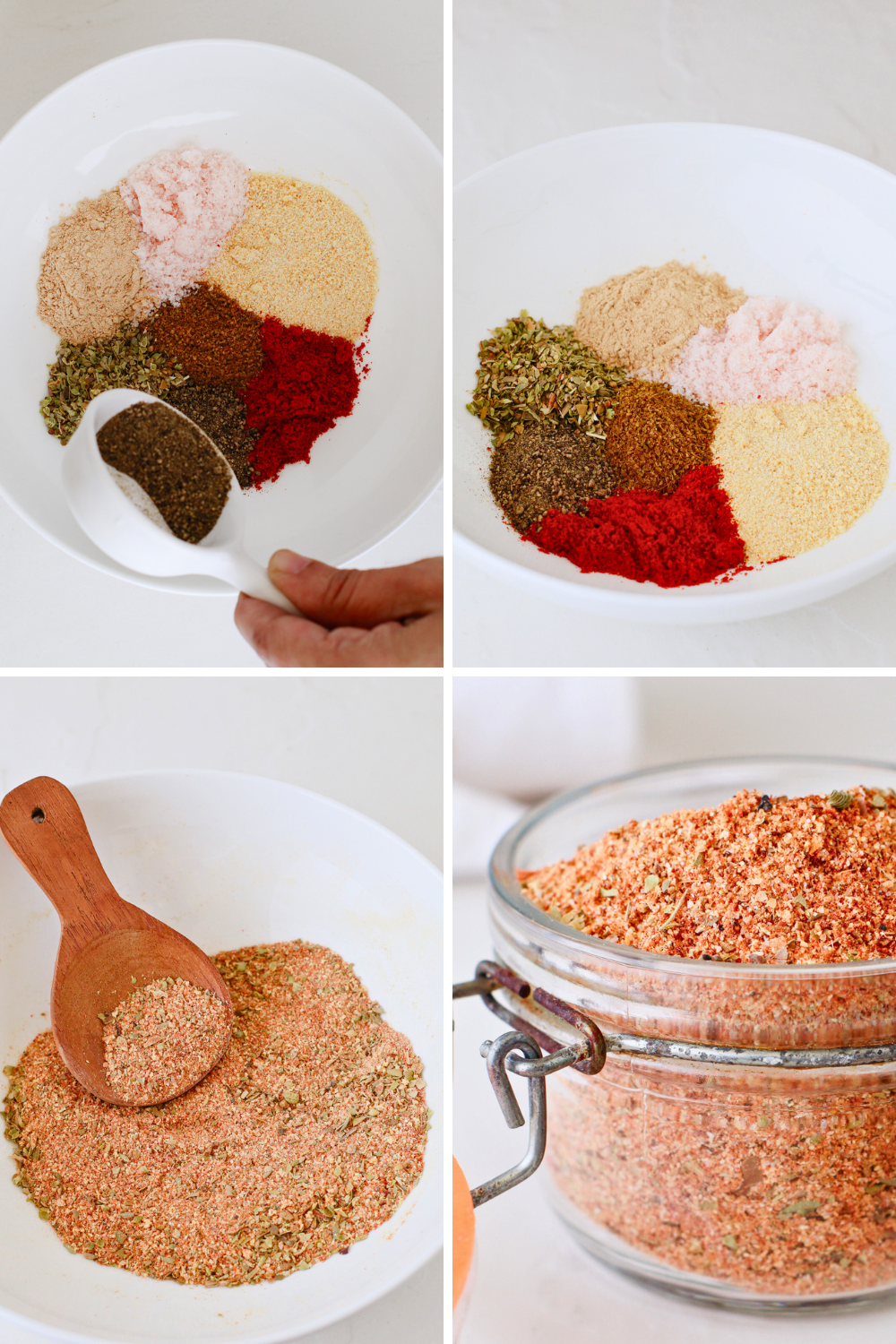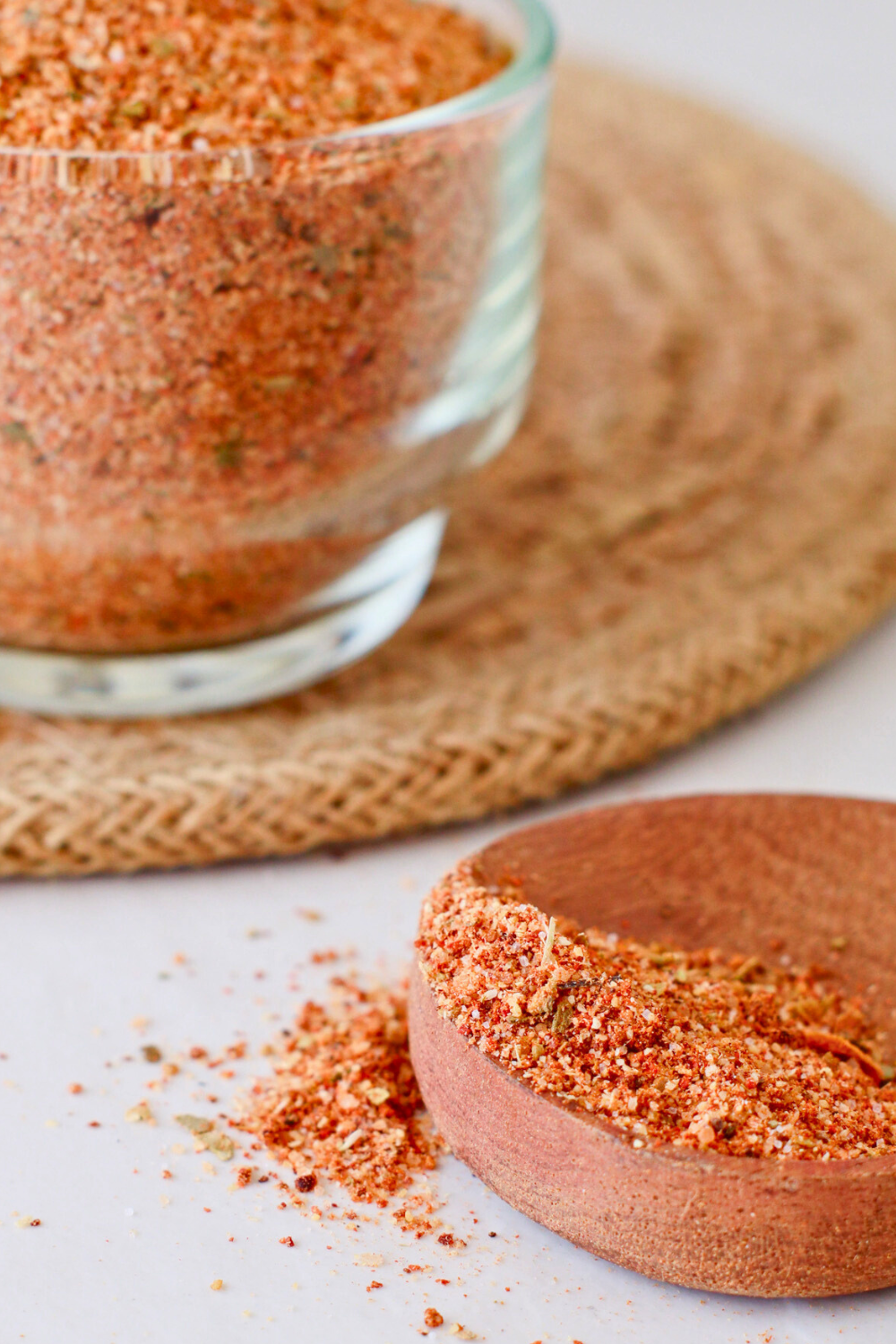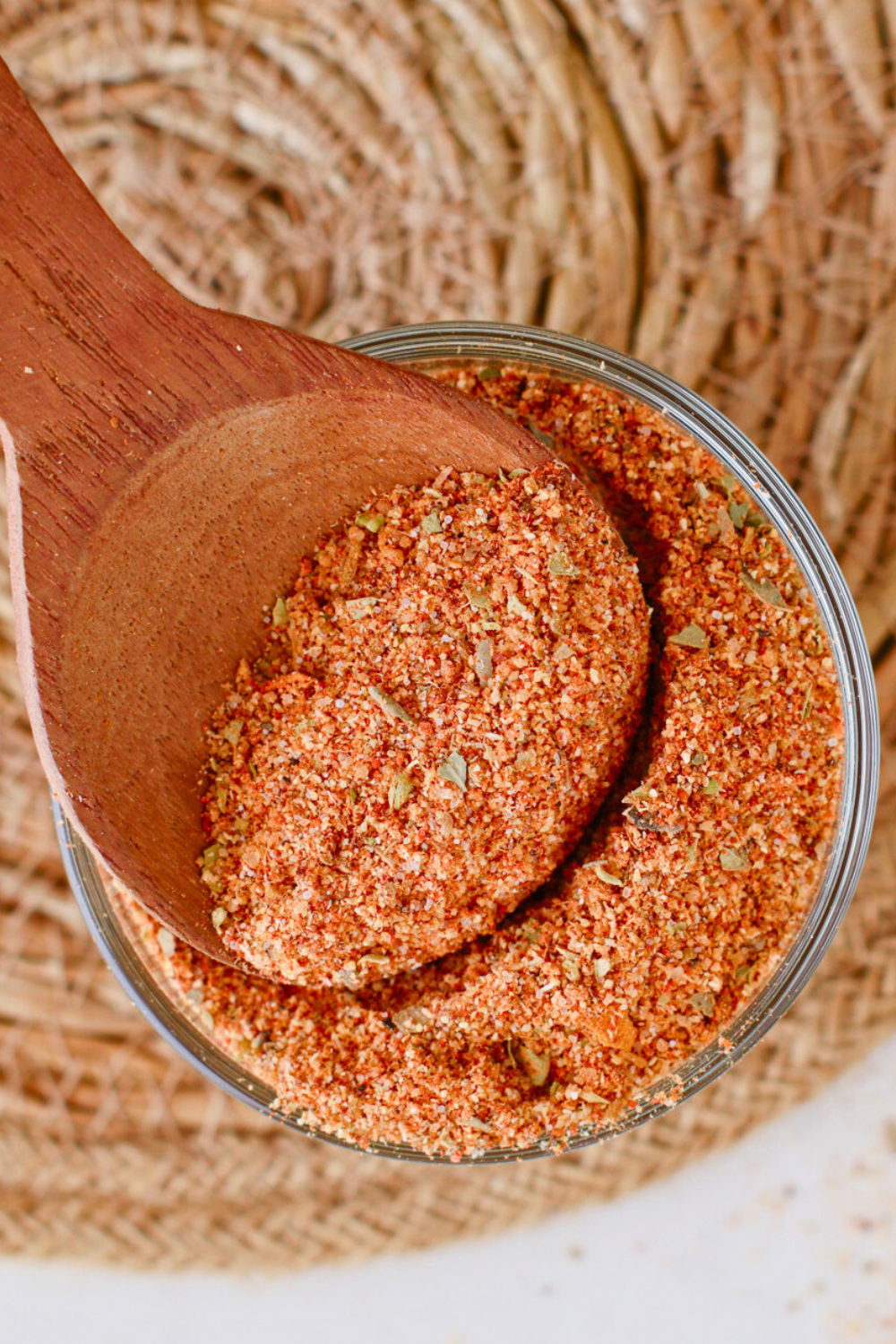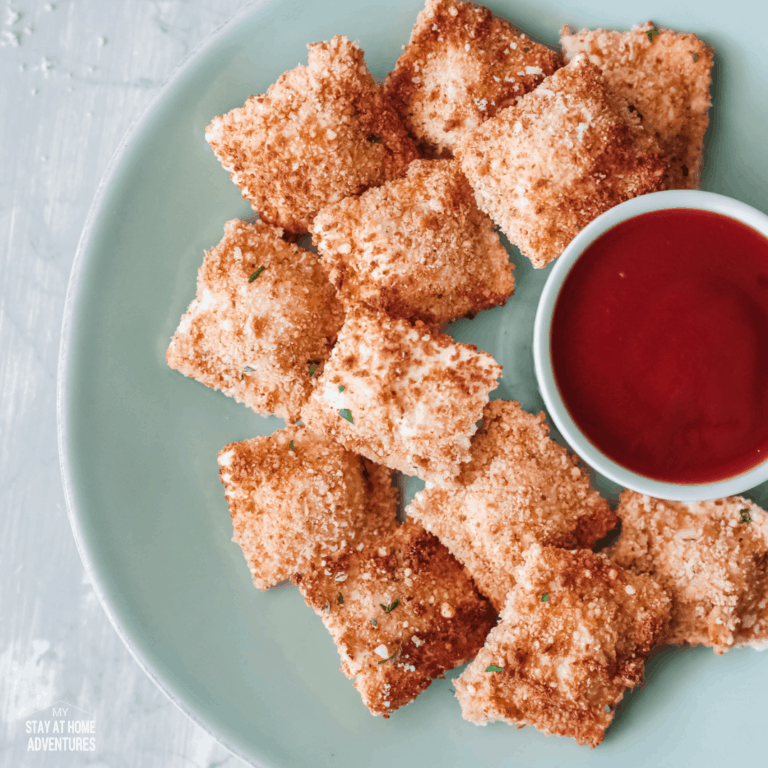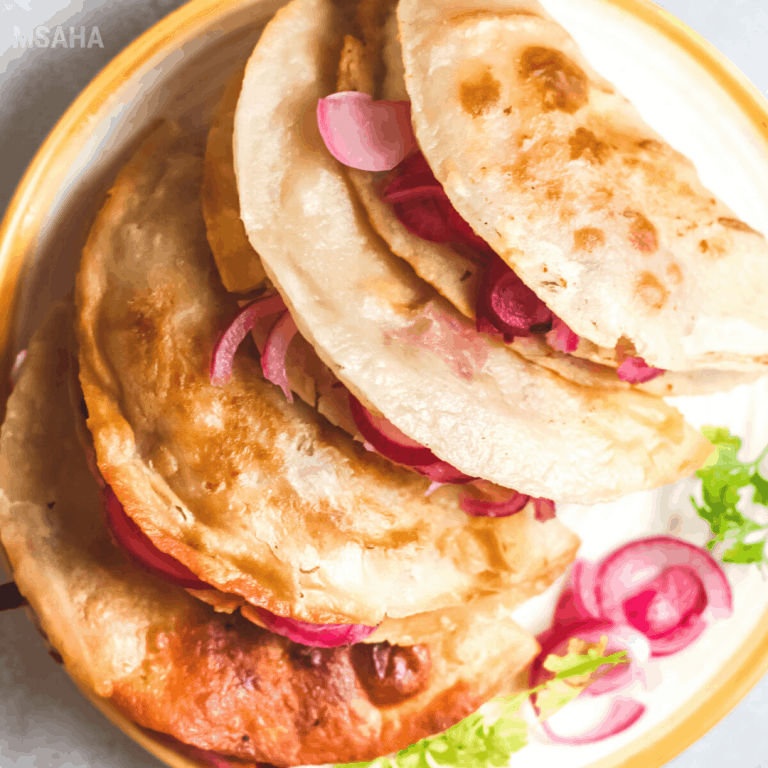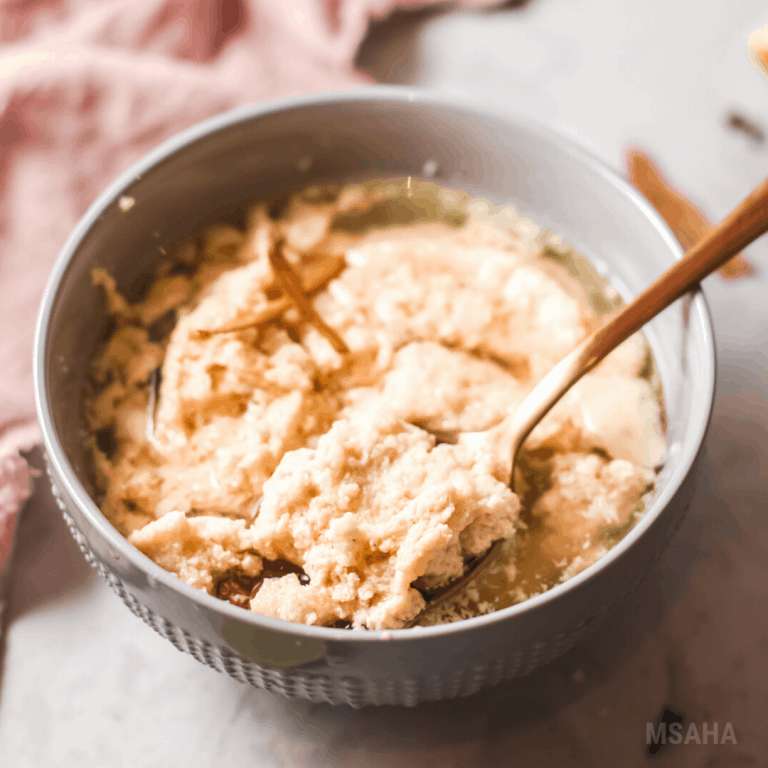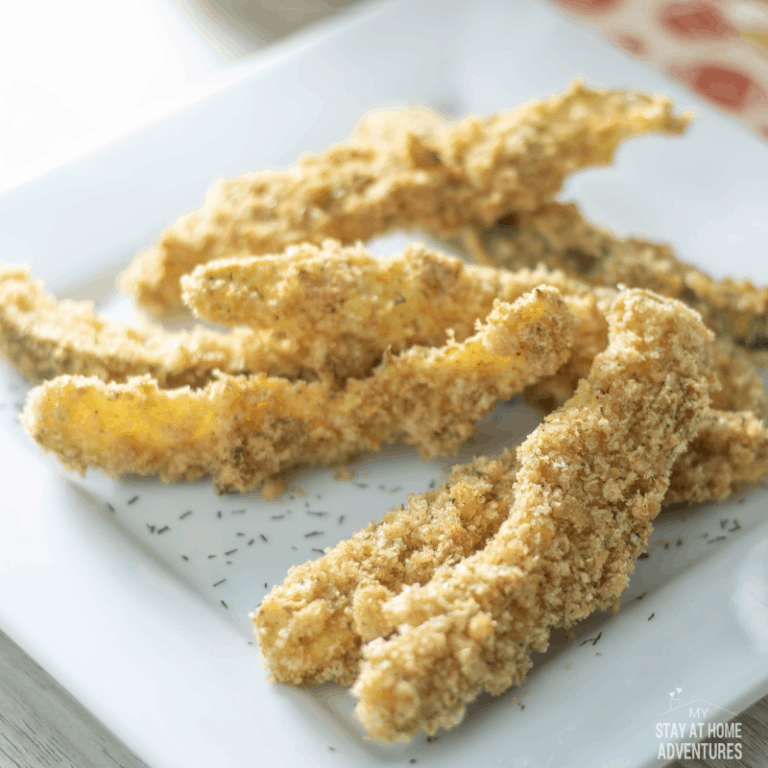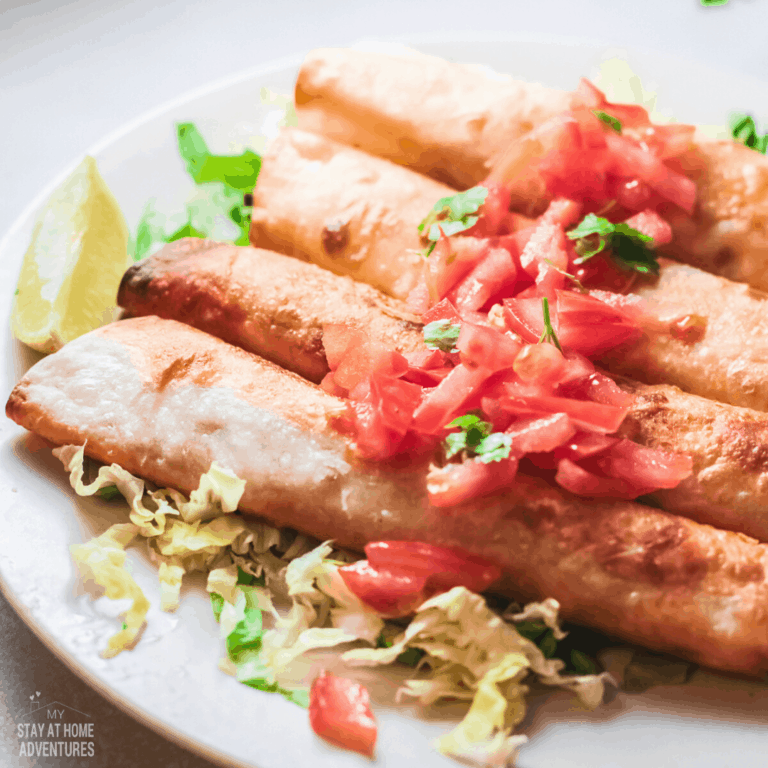Homemade Puerto Rican Adobo Seasoning Recipe
This post may contain affiliate links which might earn us money. Please read my Disclosure and Privacy policies herePuerto Rican adobo seasoning is one of those magical spice blends that brings bold, savory flavor to just about any dish. It’s a simple combination of pantry spices like garlic powder, onion powder, oregano, cumin, and paprika—but when mixed together, these everyday ingredients create something truly special. Making your own homemade Puerto Rican adobo seasoning is not only easy, but it also gives you full control over the quality of your ingredients. Plus, there’s something really satisfying about reaching for a seasoning blend you made yourself.
Adobo seasoning is part of my pantry staple because I use it so often to flavor meats like chicken, pork, and beef. It’s also great sprinkled over roasted vegetables or added into soups and stews to bring out extra depth and warmth. I love making homemade adobo versus buying it from the store because I know exactly what’s going into it—no fillers, no preservatives, just real spices with big flavor.
If you're looking for a simple way to add Puerto Rican-inspired flavor to your cooking, this homemade adobo seasoning recipe is the perfect place to start.
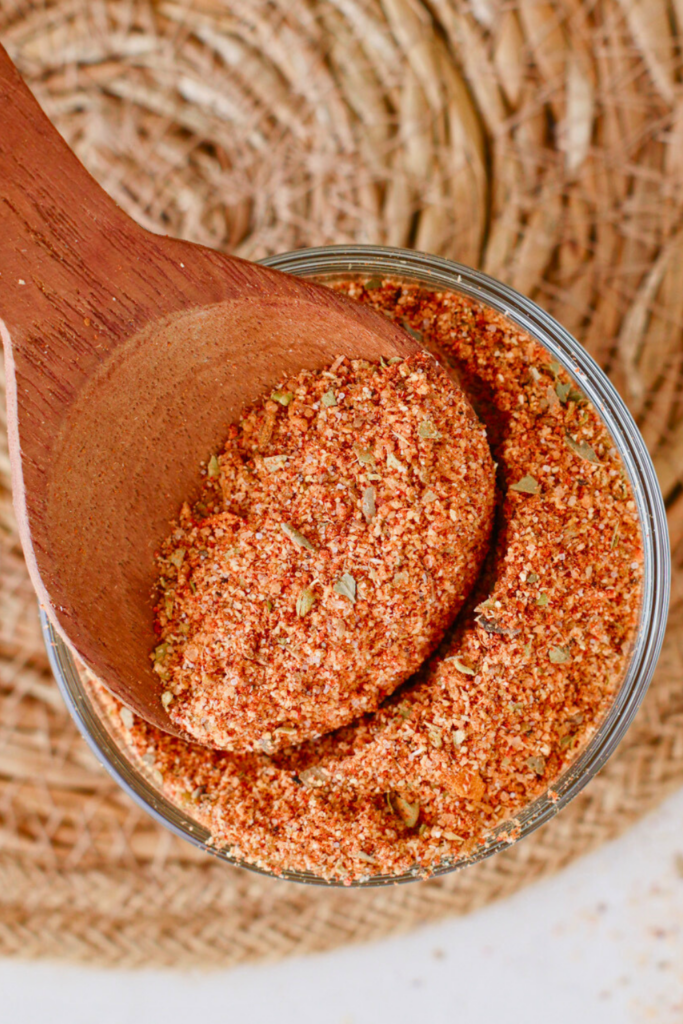
What is Puerto Rican Adobo Seasoning?
Puerto Rican adobo seasoning is a traditional dry spice blend commonly used throughout Puerto Rican cooking. While there are other types of adobo in Latin American cuisine, such as the Mexican version which includes chilies and vinegar, Puerto Rican adobo is all about the dry spices. This mix typically includes garlic powder, onion powder, oregano, black pepper, cumin, smoked paprika, and salt.
The word “adobo” comes from the Spanish word adobar, which means “to marinate” or “to season.” Early Spanish colonizers brought the technique of preserving and seasoning meat with salt and spices to the Caribbean. Over time, Puerto Rican cooks developed their own version of adobo, making it a seasoning blend that could be used easily and quickly to flavor food before cooking.
In Puerto Rican homes, adobo seasoning is a go-to for adding flavor to a variety of dishes. It’s used on everything from pernil, chicken chicharrones, Puerto Rican friend chicken to vegetables and seafood. It’s one of those all-purpose seasonings that can be reached for anytime you want to boost the taste of your meal with minimal effort.
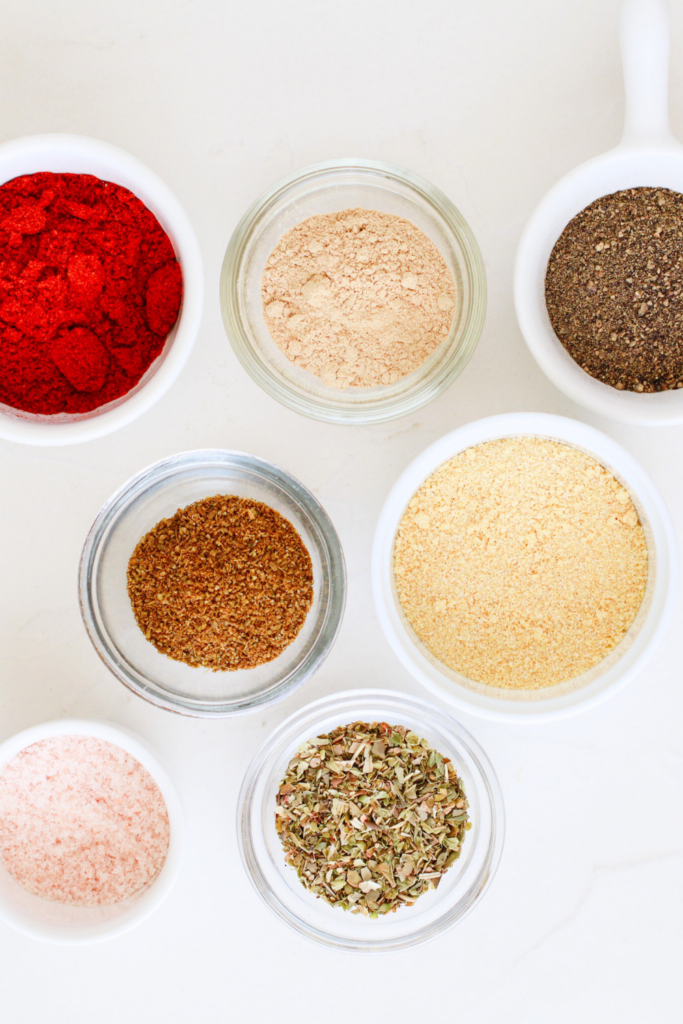
Ingredients To Make This Homemade Puerto Rican Adobo Seasoning Recipe
One of the things I appreciate most about this seasoning is how easy it is to put together. All you need are a few basic spices, and you can mix up a batch in just minutes. Here’s what goes into the blend and what each ingredient adds to the flavor:
Garlic powder – This is one of the star ingredients. It brings that rich, savory flavor that makes adobo so recognizable.
Onion powder – Adds a sweet, mellow background note that helps balance the sharpness of the garlic.
Ground cumin – Gives the seasoning a warm, earthy tone with just a slight bitterness, which works beautifully with meats.
Dried oregano – Offers a fresh, herbal flavor and a little peppery bite that rounds out the spice mix.
Black pepper – Adds a sharp, slightly spicy kick that enhances the other flavors.
Smoked paprika – Contributes a subtle smokiness and a gorgeous red color. It gives the seasoning depth without heat.
Salt – Pulls all the flavors together and helps bring out the best in the other spices. It also makes this seasoning work well as a dry rub.
These ingredients are easy to find and when combined, they create a seasoning that’s flavorful, balanced, and versatile. If you like your seasoning spicy, you can always add a bit of cayenne pepper or red pepper flakes. You can also experiment with turmeric or coriander for a twist on the traditional blend.

How to Make Puerto Rican Adobo Seasoning From Scratch
If you’ve never made your own spice blend before, don’t worry! This process is super simple and takes just a few minutes. Here’s exactly how to make homemade Puerto Rican adobo seasoning from scratch.
Step-by-Step Instructions:
- Get all your spices ready. Lay out the garlic powder, onion powder, ground cumin, dried oregano, black pepper, smoked paprika, and salt. Double-check that your spices are fresh—they should have a strong aroma when you open the container.
- Measure each spice carefully. Use clean, dry measuring spoons to get accurate amounts. Even though this recipe is forgiving, the balance of flavors works best when the measurements are consistent.
- Add all the spices to a small mixing bowl. Pour in the garlic powder, onion powder, cumin, oregano, black pepper, smoked paprika, and salt.
- Mix thoroughly. Use a small whisk or spoon to combine the spices really well. Make sure there are no clumps of any one ingredient.
- Transfer to an airtight container or spice jar. I recommend using a glass jar with a tight-fitting lid. Make sure the jar is clean and completely dry before adding your spice mix.
- Label your jar with the name and date. Homemade spice blends are best used within six months for maximum flavor, though they often last even longer if stored properly.
- Store in a cool, dry place away from sunlight. A spice cabinet or pantry works perfectly. Heat, light, and moisture can reduce the potency of your spices over time.
Once your seasoning is mixed and stored, it’s ready to use anytime you want to add bold Puerto Rican flavor to your meals.
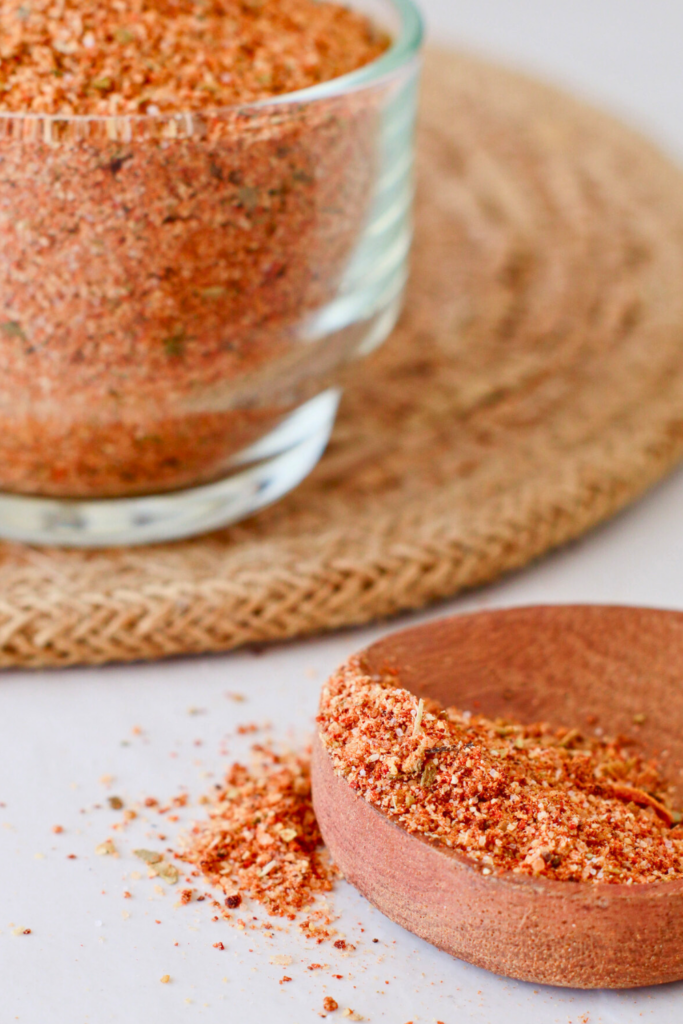
Tips For Making Homemade Puerto Rican Adobo Seasoning
Here are some simple tips that will help your homemade adobo seasoning turn out perfect every time:
- Use fresh spices for the best flavor. Check the expiration dates and give your spices a quick sniff to make sure they still smell strong.
- Choose smoked paprika instead of regular paprika for a deeper, smoky flavor.
- If you’re watching your sodium intake, you can reduce the salt or leave it out entirely and season your food to taste when cooking.
- For a spicier version, add a pinch of cayenne pepper or crushed red pepper flakes.
- Store your seasoning in an airtight container to keep it fresh longer and prevent clumping.
- Shake or stir the mix before each use to make sure the ingredients are well distributed.
- Double or triple the recipe if you want to make a larger batch for meal prepping.
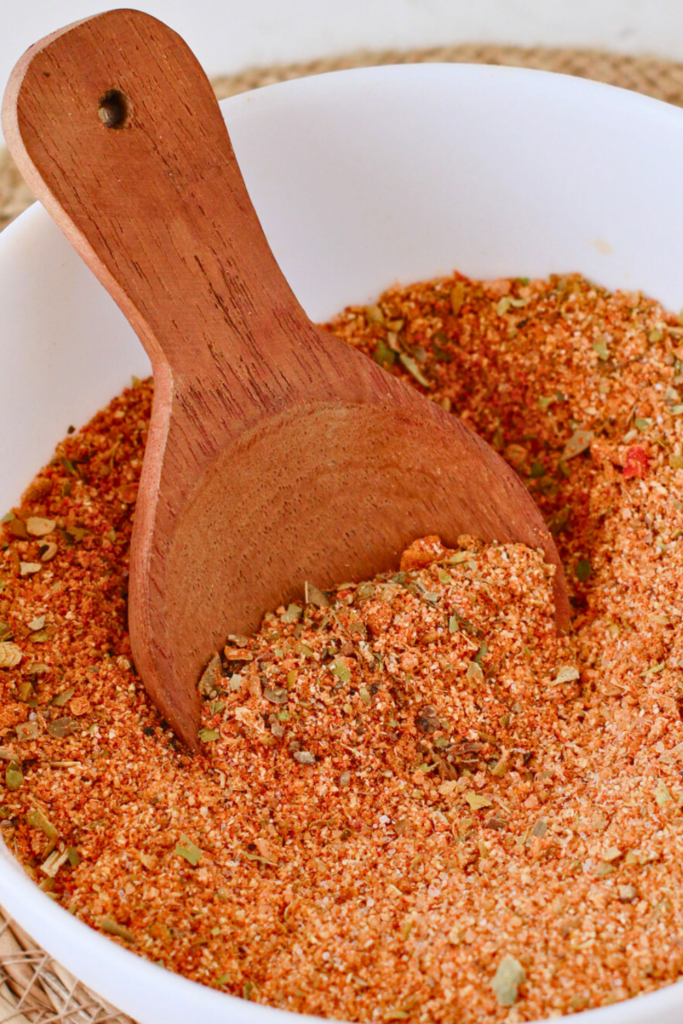
Frequently Asked Questions
How long does homemade Puerto Rican adobo seasoning last?
Homemade adobo seasoning will stay fresh for up to six months if stored properly in an airtight container in a cool, dry place. After that, the flavor might start to fade, especially if the spices were older when you made the mix. Always give it a quick smell before using—if the aroma is weak, it’s probably time to make a fresh batch.
Can I make adobo seasoning without salt?
Absolutely! You can make this homemade adobo seasoning without salt if you prefer to control the sodium in your meals. Just leave out the salt from the recipe and add it separately when you’re seasoning your dishes. The rest of the spices will still give you that classic adobo flavor.
Is Puerto Rican adobo seasoning spicy?
Puerto Rican adobo seasoning is not spicy by default. It focuses more on savory, smoky, and earthy flavors rather than heat. If you enjoy a little spice, you can add cayenne pepper or red pepper flakes to your blend to give it some kick.
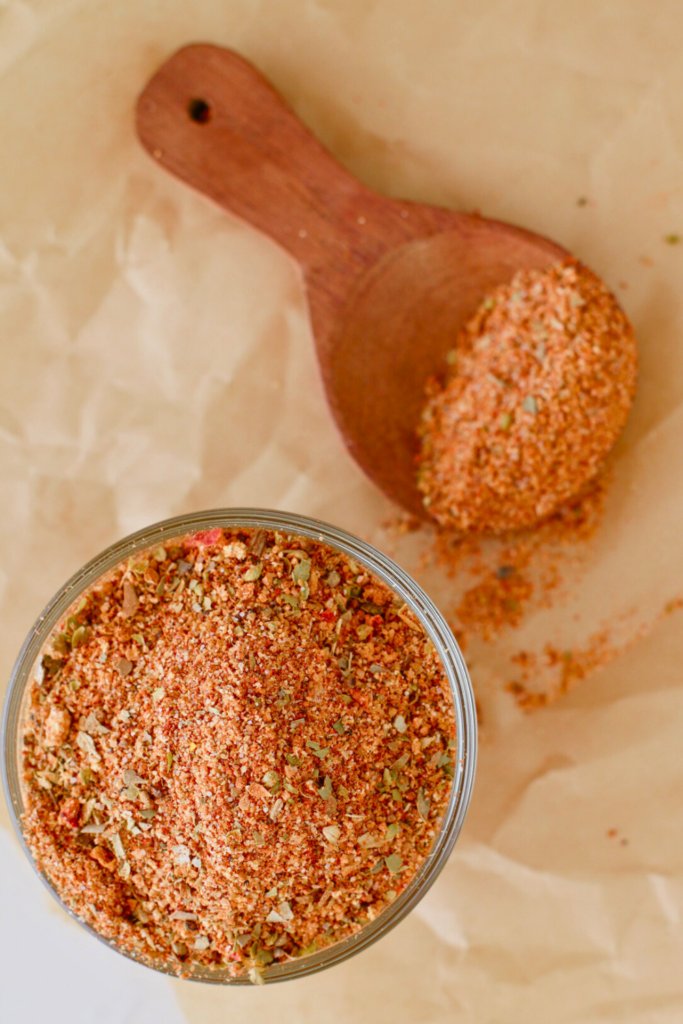
Have you tried this homemade Puerto Rican adobo seasoning recipe? Then, make sure to rate and review this recipe—I’d love to hear how it turned out for you! Share your thoughts, and if you give this seasoning a try in your kitchen, feel free to tag me and show off your flavorful creations. There’s nothing better than seeing how a simple spice blend can bring your dishes to life.te preferences.
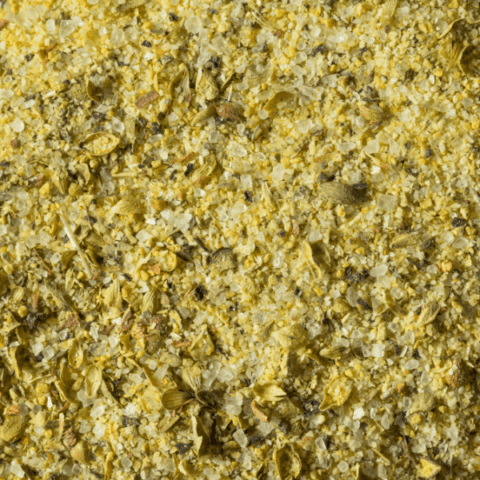
Homemade Puerto Rican Adobo Seasoning Recipe
Make your own homemade Puerto Rican adobo seasoning with just a few simple pantry spices. This easy-to-make spice blend adds bold, savory flavor to chicken, pork, beef, fish, vegetables, soups, and stews.
Perfect for beginners, this adobo seasoning recipe comes together in minutes and gives you full control over the ingredients.
Skip the store-bought version and enjoy a fresh, flavorful Puerto Rican adobo seasoning that you can use anytime to add authentic Latin flavor to your meals.
Ingredients
- 2 tbsp garlic powder
- 2 tbsp onion powder
- 1 tbsp ground cumin
- 1 tbsp dried oregano
- 1 tbsp black pepper
- 1 tbsp smoked paprika
- 2 tsp salt
Instructions
- Get all your spices ready. Gather the garlic powder, onion powder, ground cumin, dried oregano, black pepper, smoked paprika, and salt. Check that each spice smells fresh and is not expired. Fresh spices will give you the best flavor.
- Use clean, dry measuring spoons to measure each spice. Make sure your spoons and mixing bowl are completely dry. Even a little moisture can cause the seasoning mix to clump or spoil faster.
- Add the measured spices into a small mixing bowl. Place the garlic powder, onion powder, ground cumin, dried oregano, black pepper, smoked paprika, and salt into the bowl one by one.
- Mix the spices thoroughly. Use a spoon or a small whisk to stir the spices together until they are fully combined. Take your time with this step to make sure there are no clumps and that the mixture looks even in color.
- Prepare your storage container. Choose an airtight spice jar, container, or glass jar with a lid. Make sure the container is clean and completely dry before adding your seasoning.
- Carefully transfer the seasoning into your container. Use a funnel or spoon to avoid spilling the seasoning mix. Fill the container and secure the lid tightly.
- Label your container. Write the name of the seasoning and the date you made it on a piece of tape or a label. This helps you keep track of how fresh your seasoning is.
- Store your adobo seasoning in a cool, dry place. Keep it away from direct sunlight, heat, or moisture. A spice cabinet or pantry works well.
Notes
- Check the freshness of your spices. Older spices lose their flavor and aroma. If your garlic powder or oregano has been sitting in the pantry for more than a year, it’s probably time to replace it for the best results.
- Use smoked paprika, not sweet or hot paprika. Smoked paprika gives the seasoning its signature smoky flavor without heat. If you accidentally use sweet paprika, the flavor will be very different.
- Make sure all your tools and containers are completely dry. Moisture is the enemy of spice blends. Even a little water in your measuring spoons, bowl, or storage jar can cause clumping and shorten the shelf life of your seasoning.
- Mix slowly and thoroughly. Take your time when stirring the spices together to make sure everything is well combined. You want the seasoning to look even in color with no streaks or clumps.
- Label your spice jar with the name and date. This helps you keep track of when you made the blend. Homemade spice mixes are best used within six months for the strongest flavor.
- Double or triple the recipe if you plan to use it often. This seasoning works well as a rub for meats or a quick flavor boost in soups and stews, so having extra on hand can save time later.
- Customize the seasoning to your taste. If you like a little heat, add a pinch of cayenne pepper or crushed red pepper flakes. For a more earthy tone, a bit of turmeric or coriander works beautifully.
- Always shake or stir before using. Sometimes heavier spices can settle at the bottom of the jar. Giving it a quick shake helps keep your seasoning balanced.
- Store your seasoning in a cool, dark place. Heat and sunlight can break down the oils in spices and cause them to lose flavor faster. A pantry or spice cabinet away from the stove is ideal.
- Taste and adjust when cooking. Since this is a seasoning mix, the final flavor in your dish will depend on how much you use. Start with a small amount and add more as needed until you get the flavor you like.
- This recipe makes about 24 teaspoons of seasoning. Since each serving is ¼ teaspoon, your finished batch yields approximately half a cup total, which equals 24 servings.
Recommended Products
As an Amazon Associate and member of other affiliate programs, I earn from qualifying purchases.
Nutrition Information:
Yield: 24 Serving Size: 1Amount Per Serving: Calories: 8Total Fat: 0gSaturated Fat: 0gTrans Fat: 0gUnsaturated Fat: 0gCholesterol: 0mgSodium: 195mgCarbohydrates: 2gFiber: 0gSugar: 0gProtein: 0g
These nutritional calculations might not be accurate. Please speak with a licensed nutritionist to assist you.

